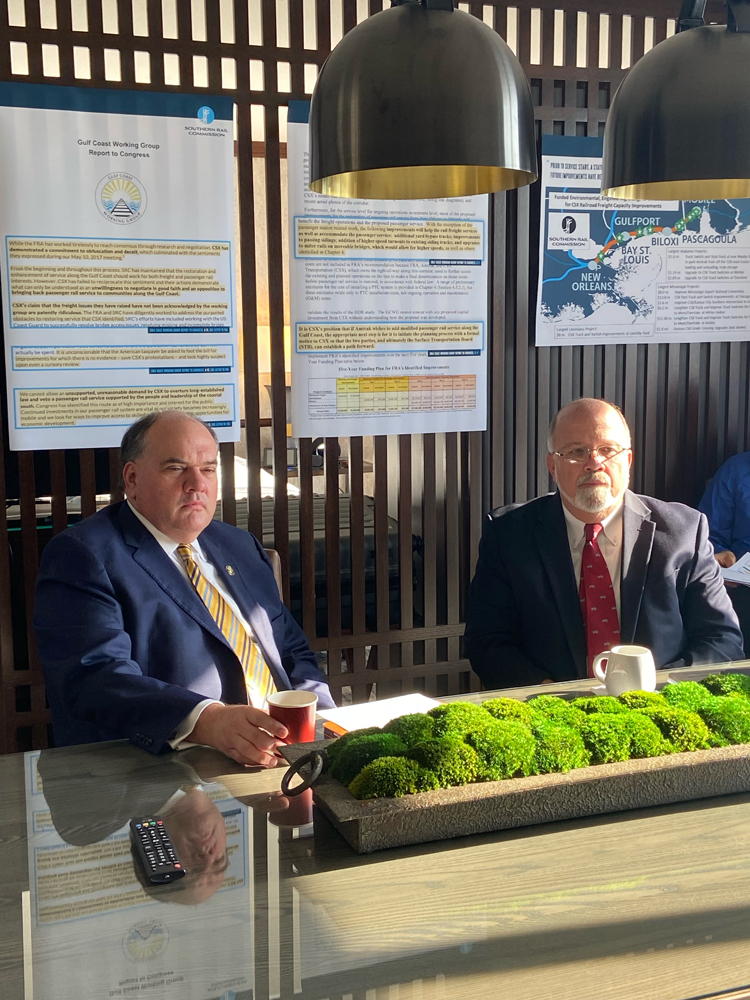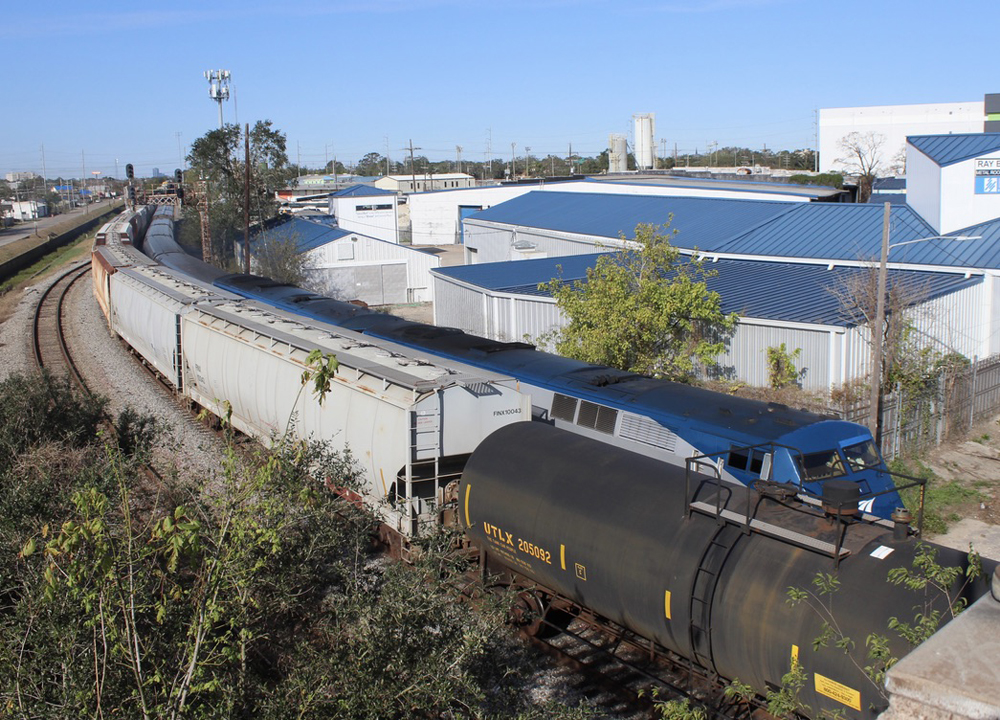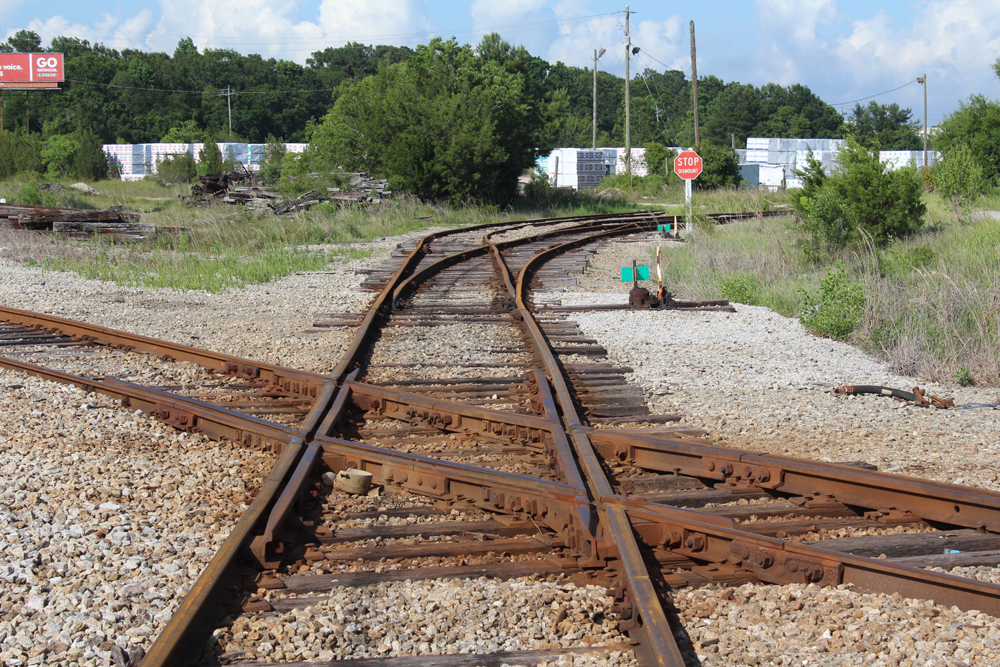
WASHINGTON – Active cross-examination by Surface Transportation Board Chairman Martin Oberman and other board members marked almost eight hours of testimony Tuesday on the first of two days of public comment on the ramifications of two proposed daily Amtrak round trips between New Orleans and Mobile, Ala.
Some 45 witnesses spoke Tuesday. While most repeated contentions included in previously submitted comments [see “Gulf Coast show(down) set to begin …,” Trains News Wire, Feb. 14, 2022], there was some striking new information.

The public-comment session is the first of two phases in the hearing over the long running between Amtrak and freight railroads CSX Transportation and Norfolk Southern over Amtrak’s effort to restore service on the Gulf Coast route. Amtrak brought the matter to the STB last year, citing its inability to reach agreement with the two freight railroads [see “Amtrak asks STB to require CSX, NS to allow Gulf Coast service,” News Wire,” March 16, 2021]. The freight carriers contend the passenger trains will be highly disruptive to their operations [see “CSX, NS say Gulf Coast passenger service would ‘devastate’ freight operations,” News Wire, Nov. 4, 2021].
Among the notable details:
— Southern Rail Commission Chairman Knox Ross recounted a conversation with a CSX official at a Cincinnati meeting in 2016. The representative said the railroad would drop opposition to passenger trains along the former route of Amtrak’s Sunset Limited, and remove random drawbridge openings from capacity modeling, if two round trips were limited to New Orleans-Mobile instead of having one of the trains extended to Orlando, Fla. Ross says this conversation was the primary reason the Commission decided to concentrate on the Gulf Coast Corridor.
— John Robert Smith, chairman of the Transportation for America advocacy group, says he learned the seven drawbridges along the 144-mile route are being “automated” by CSX over the next two years, allowing the bridges to be raised and lowered remotely. This means the railroad will no longer be tied up by the need to deliver bridge tenders to their job sites in hi-rail vehicles. This was not disclosed in the railroad’s STB filing.
— FRA Administrator Amit Bose says filings by Norfolk Southern and CSX have not met the statutory burden of proof to show the passengers would “unreasonably impair freight transportation.” Congress didn’t intend that passenger service was required to accommodate freight operations, so the railroads, Bose says, “cannot effectively crowd out passenger service by claiming that it conflicts with their existing or planned operations.” He also contends the host railroads have not presented a transparent analysis “and thus have deprived the STB of a ‘clear-eyed view’ of railroad operations.” Bose says that transparency is essential, “given that host railroads here have called for costly capital improvements as a prerequisite to adding Amtrak trains. The public has a right to know why improvements were being made.”
Questioning contentions by shippers, Mobile port
During cross-examination of shipper representatives and local government officials, STB Chairman Oberman ascertained that those testifying had not independently determined passenger trains would disrupt freight service, but relied on CSX in making that contention. Oberman also noted that a container terminal at the Port of Mobile — which has strongly opposed the Amtrak service — interchanged only 5% of its volume with rail, and that interchange with Canadian National came only after containers were driven by truck over a bridge spanning CSX tracks.

Mobile politicians and the president of the Mobile Airport Authority repeated their preference for a station at Brookley Aeroplex. They characterized the facility as a proposed “downtown airport,” although it is several miles southwest of the true downtown location CSX has said prefers. Under questioning, Oberman learned that the earliest the Aeroplex could be operational was 2024.
But the STB chairman also spent an extended time learning from Tom Giovinazzi, director of rail services for Holcim Inc., how the imminent arrival of a passenger train could disrupt operations of the daily CSX local from Mobile that serves the company’s cement plant at Theodore, Ala. Giovinazzi speaks from experience: he used to be a dispatcher for Conrail on what is now Norfolk Southern’s Chicago-Cleveland corridor.
The exchange illustrates how facts will matter as the STB evaluates arguments from all sides.
Members of Congress weigh in
U.S. Sen. Roger Wicker (R-Miss.), who opened the session, points out that provisions of the Bipartisan Infrastructure Bill would benefit both passenger and freight transportation.
House Transportation and Infrastructure Committee Chairman Peter DeFazio (D-Ore.) hadn’t been scheduled to speak. But in his appearance, he noted the state of Oregon had paid Union Pacific to install a passing track on the corridor used by Amtrak Cascades and the Coast Starlight south of Portland, Ore., only to have UP routinely running freight trains that exceed the length of the siding.
The virtual session will continue Wednesday, and will again be streamed on the STB YouTube page. Representatives from Amtrak, CSX, NS, and the Port of Mobile will have the opportunity to respond to questions from STB members.














Gotta love transparency.
Oh, CSX left out some pertinent information. Surprise, Surprise.
I watched the hearing yesterday and felt the testimony presented by Jim Mathews from the Rail Passengers Association was very compelling.
Will add to Bob’s comments concerning testimony by the gentleman representing the container terminal that their growth projections were all for container traffic moving north out of Mobile. Logically, passenger trains operating between NOLA and Mobile would create virtually no interference for container traffic moving north toward Montgomery or Birmingham.
I live here in Mobile and CSX doesn’t handle near the traffic they once did through Mobile. The reason the have trouble getting trains between Mobile and N.O. is simply train length. The few trains they run are mostly longer than the sidings or even yard tracks. When listening to the railroad scanner you can hear the frustration of the crews, dispatchers, yard masters, etc trying to keep things moving. It’s not the amount of traffic it’s how CSX is trying to do more with less. And it leaves no room for when something goes wrong, and it regularly will and does. And as far as Holman Cement plant. They are switched by CSX in Theodore by the Theodore Turn. That train regularly gets held out of the yard in the siding at Brookley for hours only a couple miles from Sibert yard in Mobile. The reason for that being the three mile long trains have yard and mains tied up trying to get past each other. It’s a joke. What CSX would like to see is Amtrak pay to extend all the sidings to accommodate their extended length freights. But you could double track the whole dang thing and CSX would still figure a way to screw it up. The art of railroading is long gone from that outfit.